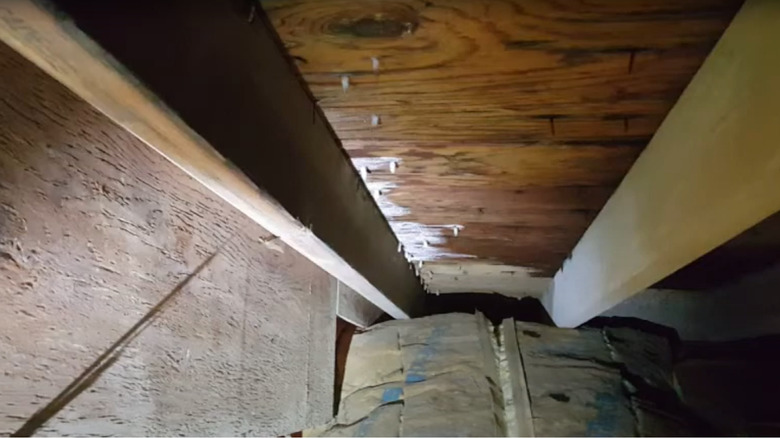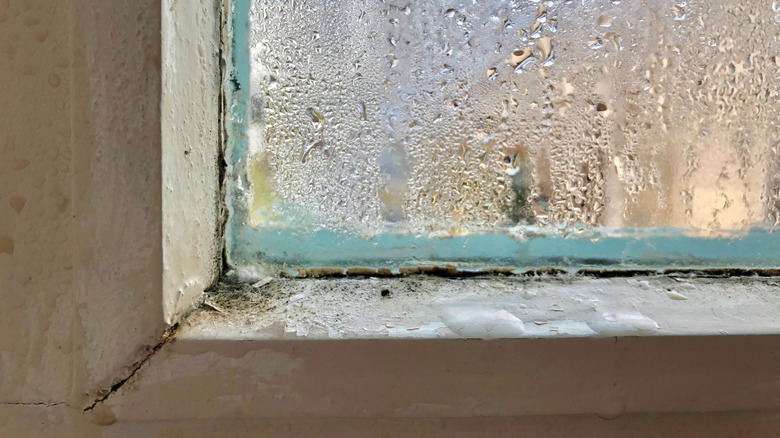What It Means If You See Frosted Nails In Your Attic During Winter
During house construction, it's not uncommon for shiners, or nails with exposed ends, to find their way into the structure. Shiners are a byproduct of the fast-paced nature of some home building projects. Contractors, in the midst of framing and assembling the skeletal structure of a house, may inadvertently leave some nails with exposed ends. These shiners usually end up hidden within the walls or in the attic, obscured by insulation or drywall. However, during the winter months, these seemingly inconspicuous nails may take on a troublesome appearance –- they become frosted. The frost on these nails is not a whimsical touch of nature but a sign of potential issues brewing within your home framework in the form of frozen condensation.
The causes of frosted nails are rooted in the fundamental science of condensation. As temperatures drop during winter, the warm air inside your home meets the cold surfaces of the attic, causing moisture in the air to condense. When this moisture comes into contact with the exposed ends of nails, it transforms into frost, creating an environment where problems can quietly thrive. The frosty nails in your attic are not just a cosmetic concern; they signify deeper and possibly serious structural issues. The primary culprits behind this phenomenon are inadequate insulation and ventilation. These deficiencies allow warm, moist air to linger in the attic, leading to condensation on the exposed nails.
Other signs of ventilation and insulation issues
Beyond frosted nails, there are other indicators to check for in order to prevent or address damage to your property's structural integrity. Watch out for temperature discrepancies and uneven temperatures across different rooms. Drafty, cold spots in winter and excessively warm areas in summer indicate that your home insulation may need attention. Of course, escalating utility bills could also be a consequence of inadequate insulation.
When your heating or cooling system works harder to maintain a comfortable temperature, energy consumption increases, leading to higher bills. Poor ventilation fosters an environment conducive to mold and mildew growth. If you notice these unwelcome guests in bathrooms, basements, or attics, it may indicate inadequate air circulation. The formation of ice dams in winter may result from poor insulation that lets warm air escape into the attic, melting snow on the roof, which then refreezes at the eaves. A moist attic or crawlspace also suggests problems with ventilation. Condensation on surfaces (including windows and ceilings) and visible water stains are clear signs of inadequate ventilation and poor insulation. Poor indoor air quality resulting from inadequate ventilation can also contribute to respiratory problems and allergies.
To prevent structural damage to your home, monitor insulation levels and ensure proper ventilation. Being vigilant and conducting regular inspections can save your home from silent decay and ensure the health of its occupants. By taking proactive measures, you can address these issues promptly, ensuring that frosty nails remain nothing more than a fleeting winter woe.

